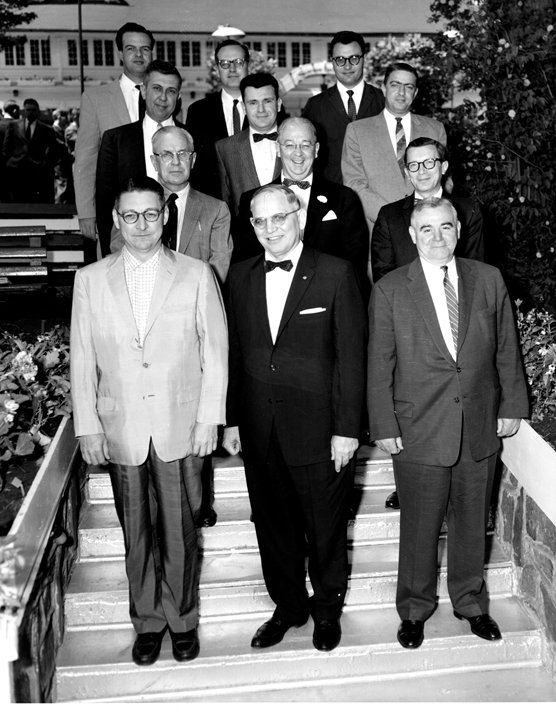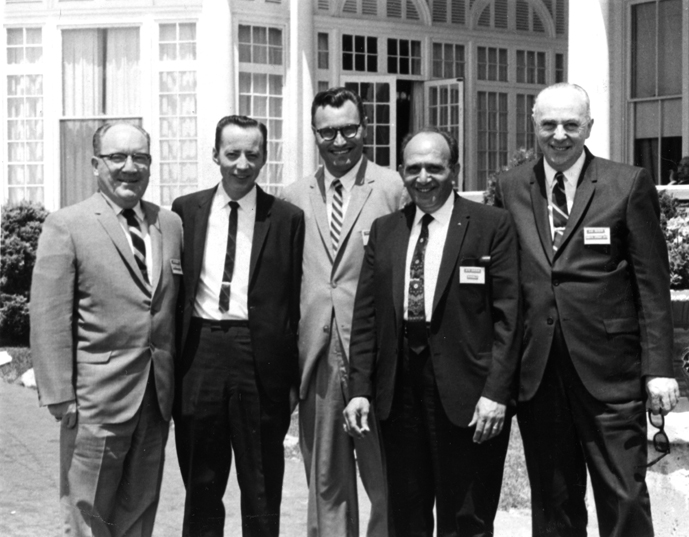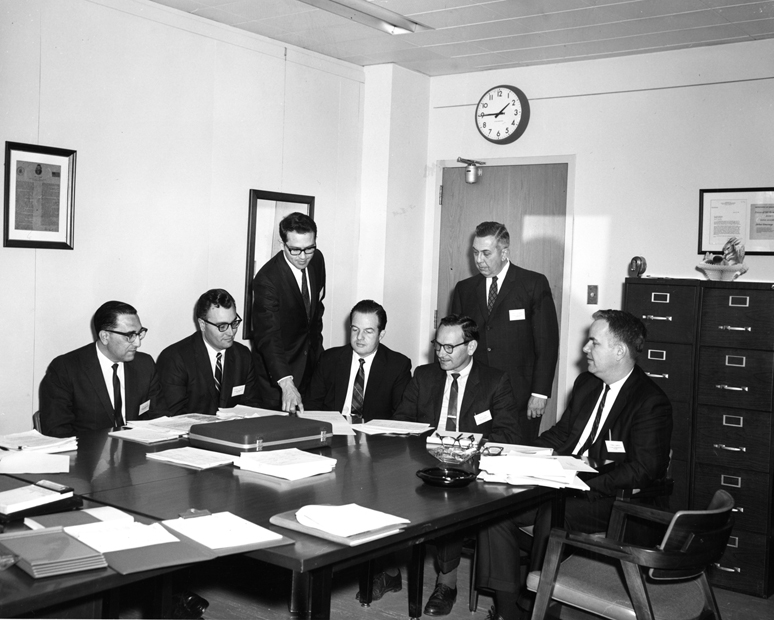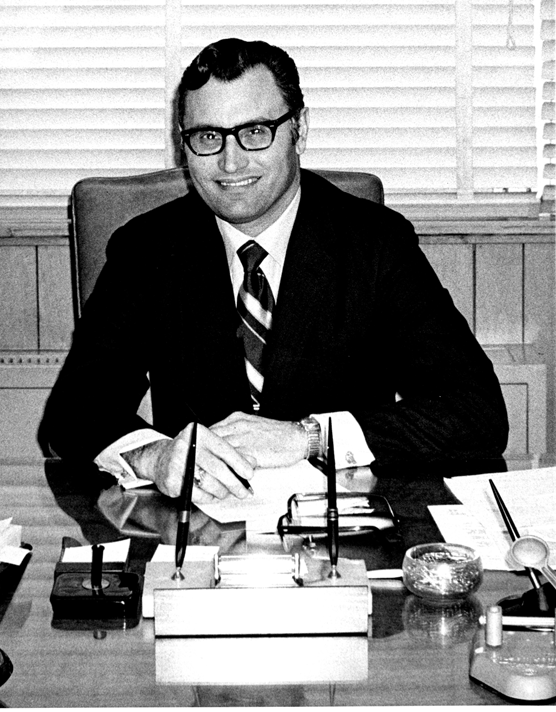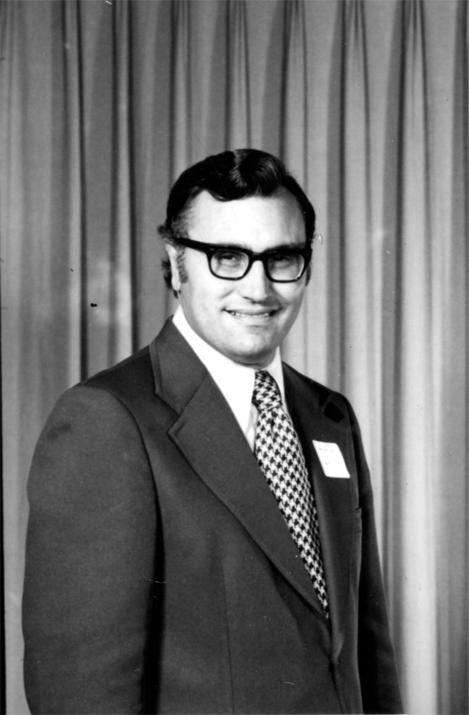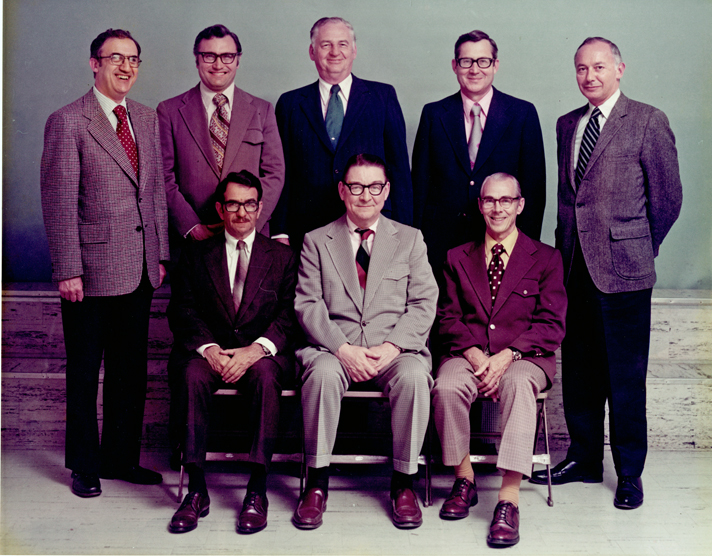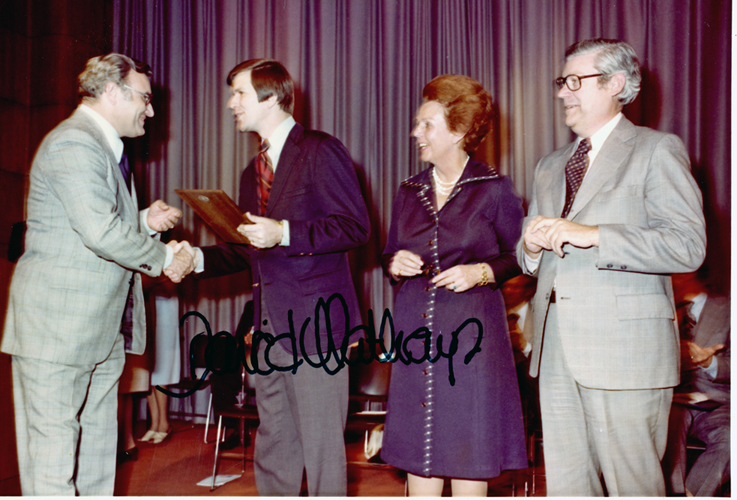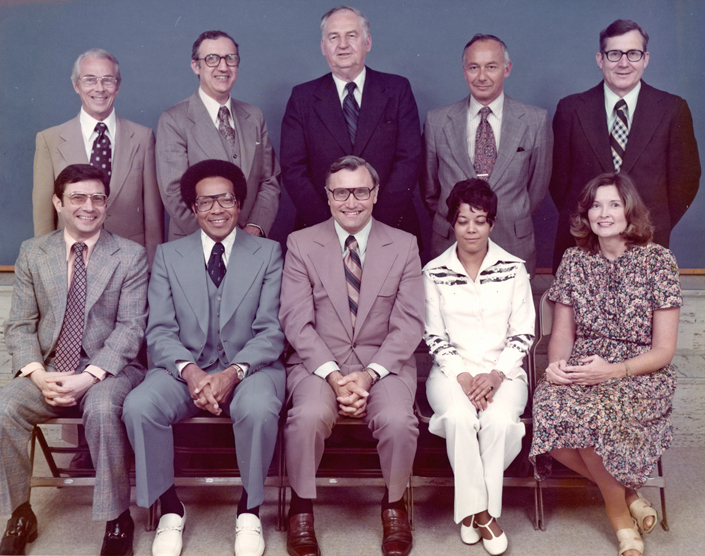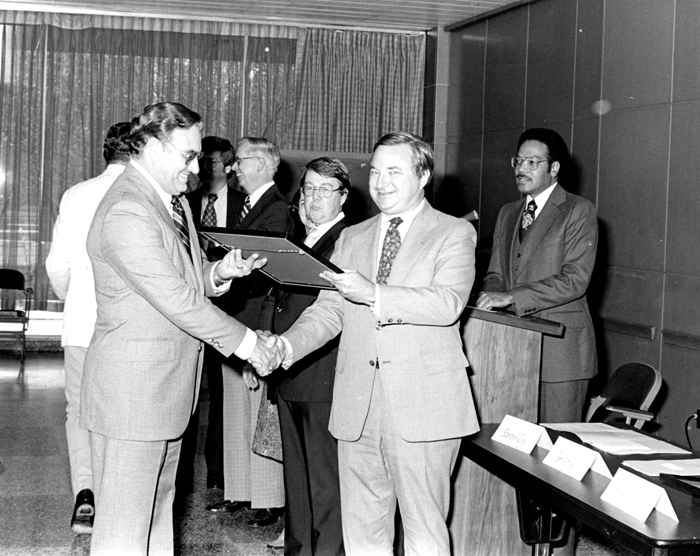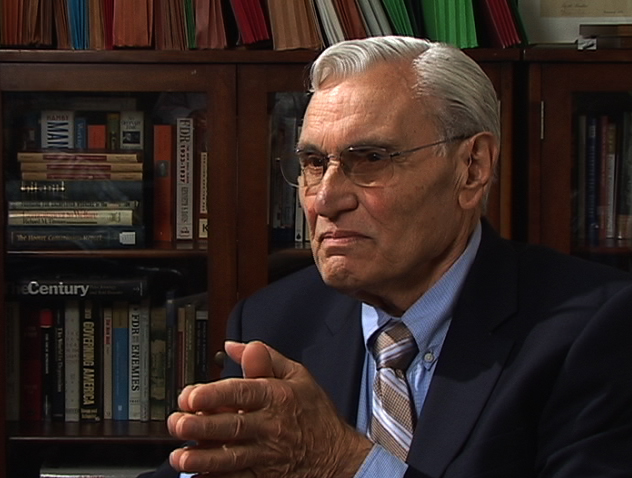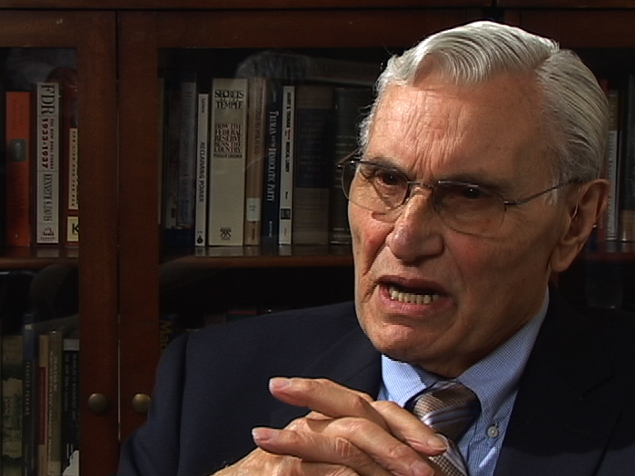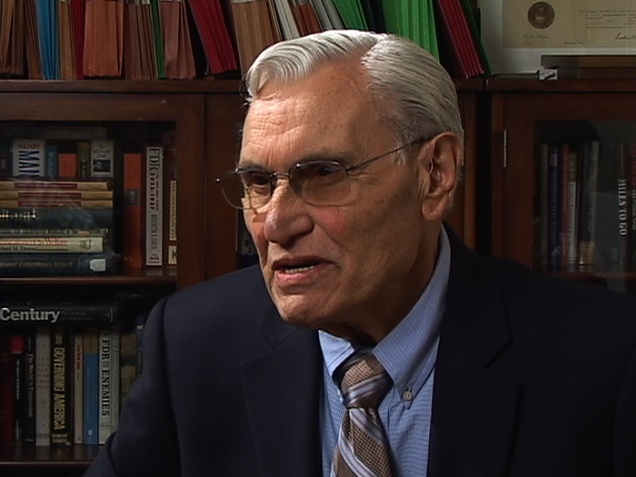Oral Histories
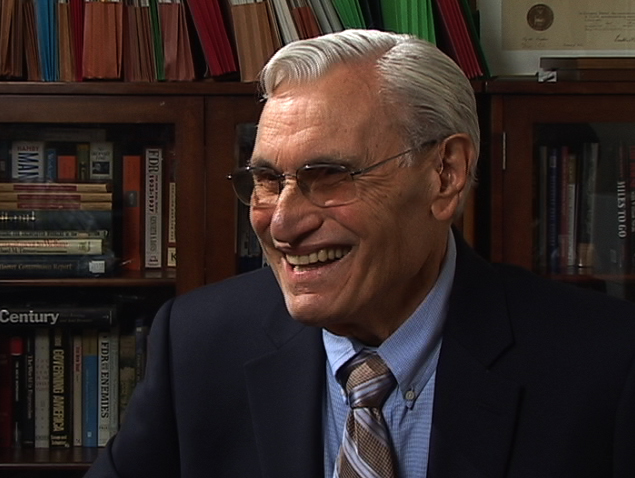
"Pat" Caligiuri during his oral history interview, 04/08/10.SSA History Archives.
| CAREER HIGHLIGHTS - | ||
Position:
Education: Awards: |
1/79 - 10/80 8/75 - 1/79 3/71 - 8/75 7/70 - 3/71 3/68 - 8/70 1/66 - 3/68
10/50 - 10/62
|
Associate Commissioner, Central Operations Director, Bureau of Retirement and Survivors Insurance Regional Representative, New York Region Executive Development Program Director of Management, New York Program Service Center Assistant Regional Representative, District Office Operations, New York Region District Manager, New York (Flushing) Office Various positions in New York District and Regional Offices
Commissioner's Citation, 1966 |
"Your performance in leading BRSI continues to display the uncommon level of commitment and innovative administrative ability which make this special recognition so richly deserved." Letter from Bob Bynum, April 9, 1976 "Many of the achievements in this Agency are directly attributable to your outstanding leadership and exceptional skills and I know you take great pride in the accomplishments." Letter from Herb Doggette, Sept. 22, 1980 |
||
| VIDEO EXCERPTS OF INTERVIEW- |
(All excerpts in MP4 format) |
| TRANSCRIPT OF INTERVIEW- |
Q1: How did you come to work for SSA and what was your first position? I went to an aviation high school in New York City, Haaren High, as I was very interested in aviation and airplanes. In my senior year, in 1943, the war was on and I was dying to get into the service. I took a test and was interviewed for the Naval Aviation Program and I was accepted. In September of that year I was 17. I went into the navy as a naval aviation trainee and trained for a year, but I didn’t quite make it. I was washed out and they put me into the regular navy. I became a Quartermaster on a landing ship and we went into the Pacific. We went to Okinawa, the Philippines; we were involved in the Philippines liberation. After the war ended we were sent to China (Tientsin, China), and supplied the marines there. We also landed some Chinese nationalist troops behind communist lines in a peninsula north of Tientsin. The name of the town was Chin-Wang-Tao. After the war we turned the ship over to the Nationalist Chinese and we went home and that was the end of my military career.
Regional Conference in Schroon Lake, NY, circa 1965. First row (l to r): Hugh McKenna, Victor Christgau, Joe Tighe. Second row (l to r): Vic Broome, Ed Faulhaber, Dave Kopelman. Third row (l to r): Bob Wilwerth, Tommy McGovern, Barney Doonan. Fourth row (l to r): Art Simmermeyer, Vince Gavin, Pat. Photo courtesy of Mr. Caligiuri.
Pat in July 1967 (third from left) while serving as the Assistant Regional Representative for the New York Region. Also shown, left to right, James Murphy, William Grace, Pat, Sydney Savrin, and Sidney Wekser. SSA History Archives
Pat Caligiuri (second from left) in May 1968 at a meeting of Payment Center Directors. Also seen, left to right, Louis DeLucas, Pat, James Forbus, Arthur Simermeyer, Roger Duba, Robert Willworth, and Leeman Forrest. SSA History Archives
Pat at his desk while serving as Director of Management in the New York Payment Center, circa 1969. Photo courtesy of Mr. Caligiuri. .
Pat in December 1973 for his second Commissioner's Citation. SSA History Archives
Meeting of Payment Center chiefs with Bureau Director, March 1973. Seated (l to r): Julius Berman, Hugh McKenna, Ells Listerman. Standing (l to r) Ed Sabatini, Pat, Joe White, Ted Girdner, Walter Baum. Photo courtesy of Mr. Caligiuri.
Pat receiving Executive Management Award from the Secretary of HEW, April 9, 1976. Left to right: Pat, Dave Matthews (Secretary), Marjorie Lynch, Bruce Cardwell (Commissioner). Photo courtesy of Mr. Caligiuri.
Meeting of Regional Reps. in Baltimore March 1977. Left to right (seated): Marty Taffet, Herb Doggette, Pat, Ruth Pierce, Jane Presley. Left to right (standing): Ells Listerman, Ed Sabatini, Joe White, Walter Baum, Ted Girdner. Photo courtesy of Mr. Caligiuri.
Pat receiving award from Commissioner Stanford Ross, December 1979. Photo courtesy of Mr. Caligiuri
Q5: What was your management style? And when I went there I didn’t just sit in the office with the manager and go out to lunch and dinner and say “hi, goodbye.” I’d go out and walk around the offices and I didn’t want anyone else with me. I didn’t want the manager with me, or anyone else on the staff. I’d go by myself and I’d just walk around and talk to people, and they loved it. I got great feedback and I got a chance to meet people. I believe I made them feel like I was one of them. The thing is, I understood what they were doing because I had done it, and I knew what they were up against. That, I enjoyed doing, and I think I accomplished a lot.
Q6: You were the first manager in SSA to institute the “flex-time” work schedule. How did that come about?
I always went with the team, which was unheard of before. I would meet with the survey team every night and ask, “What have you found? How are we doing on this?” We would compose a final report, with action items that they would have to do. We would then have a final wrap up meeting with the Regional Rep and his top staff and we’d say, “Here’s what we found, and this is what we feel you need to do.” And we’d present the action items and give them a deadline for completion. It was something they never had before.
There was a lot more movement after that of people from the benefit authorizer’s position to the claims authorizer’s position. Again, there was a lot of negative reaction to that. “Oh no, you don’t want to do that.” Claims authorizers and even management weren’t too much in favor of it. But it went into effect and it worked out very well.
We started modularization in the Program Service Centers because we had the first experimental module in the New York Payment Center, which I agreed to do, and it was a great success. After that, when I became Director of BRSI, I instituted it in all the Program Service Centers as well as ODO, and later as Associate Commissioner in OCRO (Office of Central Records Operations). So that was, I think, my greatest contribution and greatest achievement in Social Security.
|
